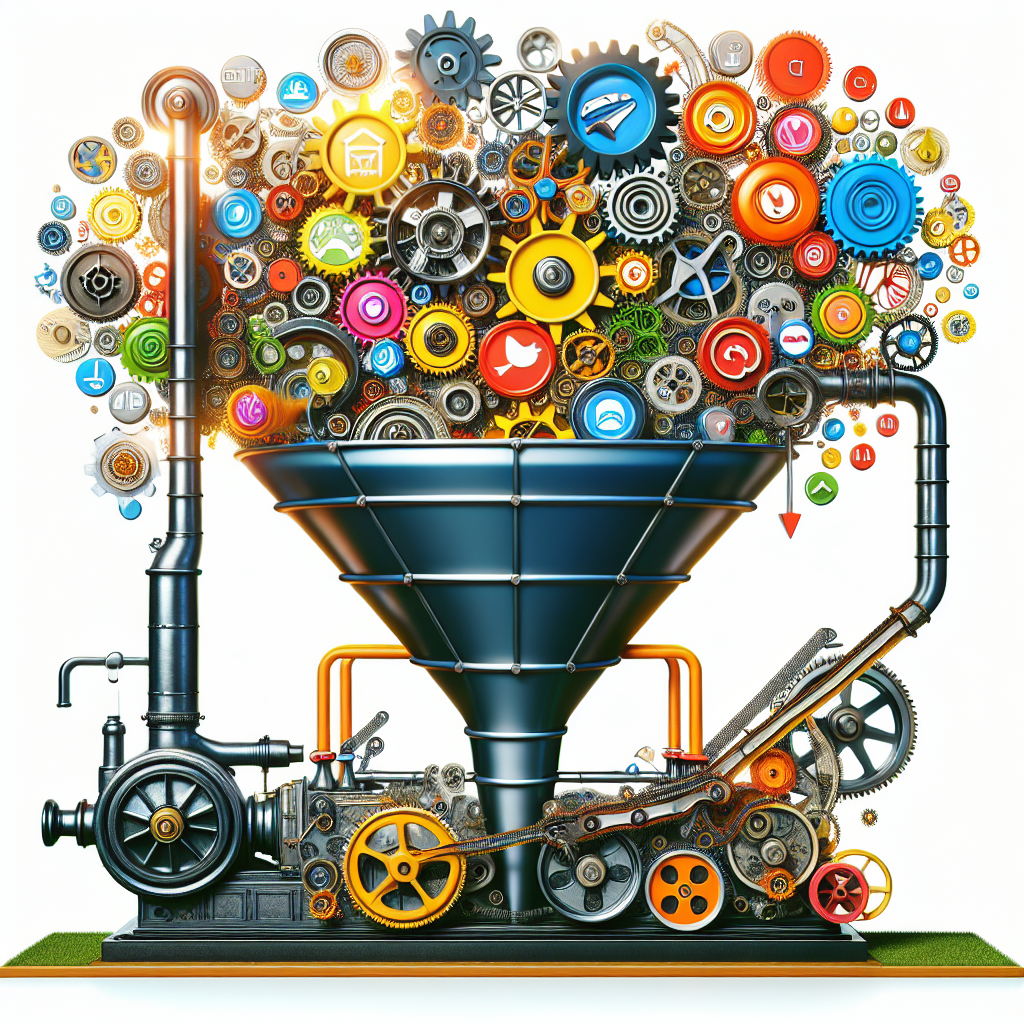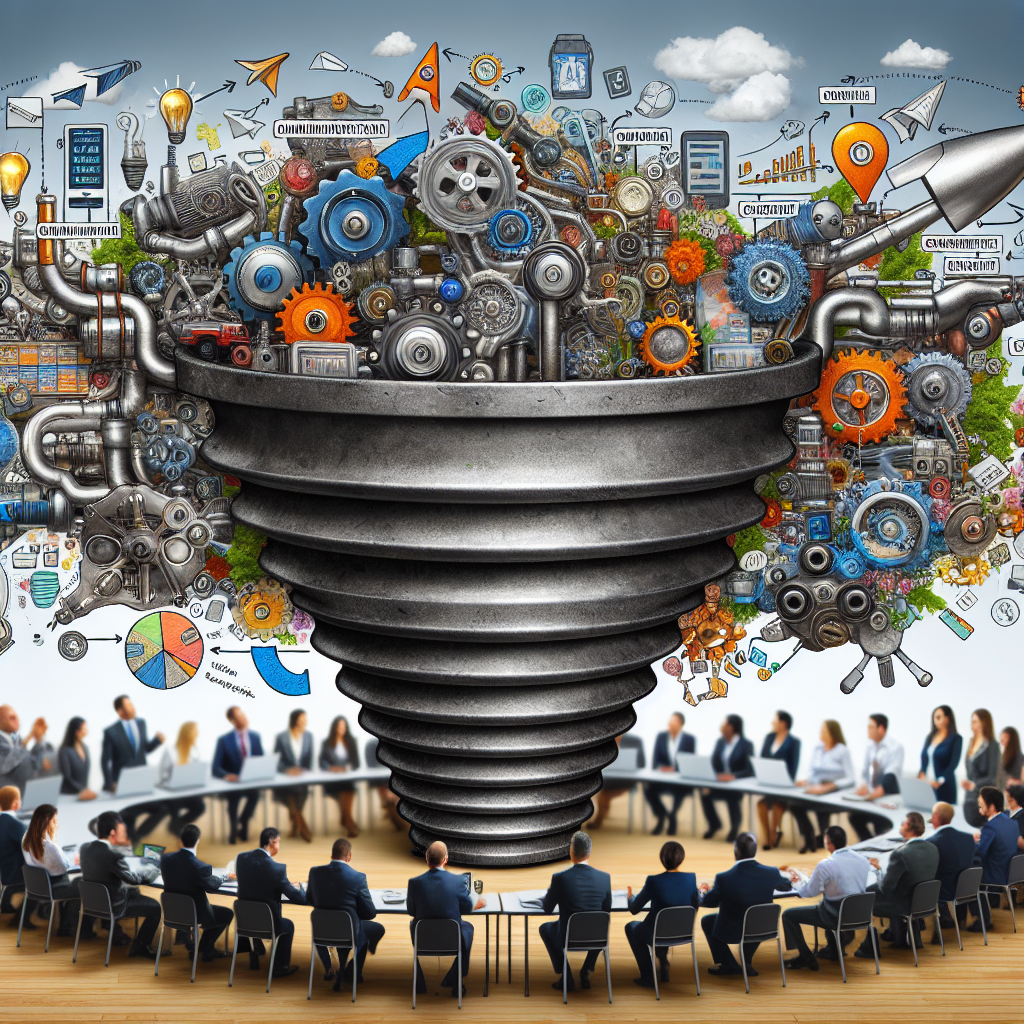-
Table of Contents
- Building the Brand Engine Behind the Funnel
- Let’s Get One Thing Straight: The Funnel Is Not the Strategy
- What Is the Brand Engine?
- Key Components of a Brand Engine
- Why Most Funnels Fail (And What to Do About It)
- How to Build a Brand Engine That Fuels the Funnel
- 1. Start With Strategic Positioning
- 2. Build a Messaging Hierarchy
- 3. Design for Distinction
- 4. Operationalize Brand Across the Org
- 5. Measure What Matters
Building the Brand Engine Behind the Funnel

Most marketers obsess over the funnel. But what powers the funnel? Brand. Not the fluffy kind—real, strategic brand that drives demand, pricing power, and long-term growth. This article breaks down how to build a brand engine that fuels every stage of your funnel, from awareness to advocacy.
Let’s Get One Thing Straight: The Funnel Is Not the Strategy
Somewhere along the way, marketers started treating the funnel like a religion. Top of funnel, middle of funnel, bottom of funnel—hallelujah, pass the attribution model. But here’s the inconvenient truth: the funnel is a framework, not a strategy. It’s a map, not the engine. And if your brand isn’t powering that map, you’re just pushing pixels into the void.
Let’s be blunt: if your brand is weak, your funnel is leaky. You can optimize your CTAs until your fingers bleed, but if no one knows who you are—or worse, doesn’t care—you’re just polishing a ghost.
What Is the Brand Engine?
The brand engine is the strategic, operational, and creative system that drives awareness, trust, and preference at scale. It’s not a logo. It’s not a tagline. It’s the sum of your positioning, your narrative, your customer experience, and your cultural relevance.
Think of it like this: if your funnel is a car, your brand engine is the V8 under the hood. Without it, you’re Fred Flintstone foot-pedaling your way through quarterly targets.
Key Components of a Brand Engine
- Positioning: Clear, differentiated, and relevant to your audience’s pain points and aspirations.
- Messaging Architecture: A hierarchy of messages that align across channels and personas.
- Visual Identity: Not just pretty pixels—design that signals value and builds memory structures.
- Voice & Tone: Consistent, confident, and unmistakably yours.
- Customer Experience: Every touchpoint reinforces the brand promise.
Why Most Funnels Fail (And What to Do About It)
Funnels fail because they’re built on tactics, not strategy. You can’t retarget your way out of irrelevance. You can’t AB test your way into emotional resonance. And you sure as hell can’t automate your way into trust.
Here’s what happens when you build a funnel without a brand engine:
- High bounce rates because no one knows who you are
- Low conversion rates because no one trusts you
- High churn because no one feels connected to you
- Price sensitivity because you’re seen as a commodity
Sound familiar? That’s not a funnel problem. That’s a brand problem.
How to Build a Brand Engine That Fuels the Funnel
1. Start With Strategic Positioning
If your positioning sounds like it came from a B2B Mad Libs generator, start over. Great positioning is:
- Relevant: Solves a real problem for a real audience
- Different: Clearly distinct from competitors
- Credible: Believable based on your capabilities
Use frameworks like Value Proposition Canvas or Ogilvy’s Big Idea to sharpen your edge.
2. Build a Messaging Hierarchy
Stop writing copy in a vacuum. Build a messaging architecture that aligns your value prop across:
- Website
- Sales decks
- Ad campaigns
- Customer success scripts
Consistency isn’t boring—it’s branding. Repetition builds memory. Memory builds trust.
3. Design for Distinction
Your visual identity should do more than look good—it should make you unforgettable. Use distinctive brand assets (DBAs) like:
- Unique color palettes
- Custom typography
- Ownable iconography
- Signature motion or sound
Need proof? Look at Coca-Cola, Apple, or Mailchimp. You know them before you read a word.
4. Operationalize Brand Across the Org
Your brand isn’t just a marketing thing—it’s a company thing. Train your:
- Sales team to pitch with brand-aligned language
- Product team to build features that reinforce your promise
- Support team to deliver on-brand experiences
Brand is a team sport. If marketing is the only one playing, you’re losing.
5. Measure What Matters
Brand isn’t soft. It’s just measured wrong. Go beyond impressions and track:
- Brand recall
- <a href="https://www.nielsen.com/us/en/solutions/brand-effect


Leave a Reply